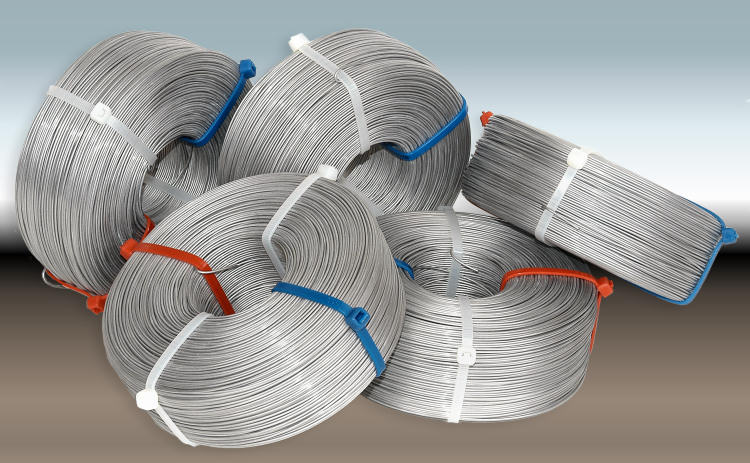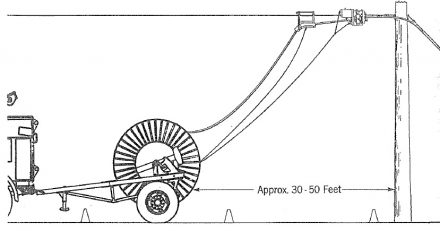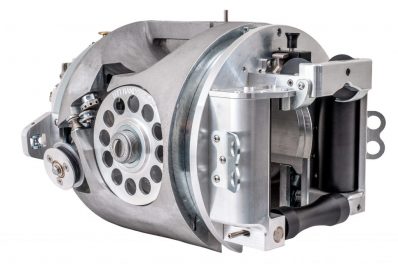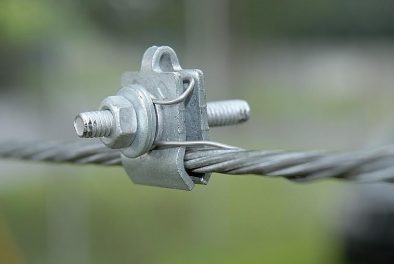From Boston, MA to Phoenix, AZ, lashing wire is used to connect all corners of the country. Stainless steel lashing wire is used in a lasher to bind an aerial cable or combination of cables to a supporting strand. In supporting telecommunications and electric cable, you could say that lashing wires literally bind America together.
America’s vast and varying climates and atmospheres have forced lashing wire manufacturers to adapt. Today, GMP offers 3 distinct alloys of lashing wire, each with a specific environment in mind. Below, we’ll teach you everything you need to know about each alloy so that you can choose the optimal wire for the job at hand.
- Alloy — Low carbon, 17% chromium wire
- Suitable for general use and in ordinary atmospheric exposure
- Will acquire only a dark surface stain
- Specifically not recommended for use within 25 miles of salt water or industrial operations which emit pollutants
Type 430 stainless steel was the norm for many years. It provided sufficient corrosion protection for most of the country and could be bought at a reasonable price. Over time, the industry hit a realization that lashed wire near salt water had to be replaced more frequently than lashing wire in rural areas. This spurred the push for a more corrosive-resistant alloy that would not deteriorate in a salt spray environment. Enter the Type 316.
Developed specifically for use in coastal regions, Type 316 has a much greater corrosion resistance to the salt and humidity in ocean side atmospheres. In fact, Type 316 provides the best insurance against corrosive failure and atmospheric conditions, making it the go-to wire for most lashing jobs.
- Alloy — Modified 18-10 analysis containing approximately 2.5% molybdenum
- Most resistant wire to the corrosive reaction of most chemicals, including chlorides and sulfides
- Particularly resistant to pitting and pin hole corrosion, commonly caused by salt spray
A second major realization hit the industry when it was noted that Type 430 stainless steel had to be re-lashed more frequently in industrialized areas. Engineers discovered that acid rain caused by an increase of air pollutants from the industrial plants increased the corrosion on Type 430. The problem was tricky; installers didn’t need (and couldn’t afford) the full corrosion resistance offered by the Type 316, yet needed a new alloy more corrosion-resistant than the failing Type 430.
Type 302 is a good compromise between Type 430 and Type 316. Type 302 offers better corrosion resistance than Type 430 stainless steel, yet is not as expensive as Type 316. A .038 in. diameter Type 302 wire provides strength equal to a .045 in. type 430 wire with better ductility (easier bending and unwinding) and better elongation (less chance of wire breakage from stress).
- Alloy — 18% chromium, 8% nickel analysis
- Resistance to corrosion from industrial atmospheres
- Higher tensile strength and breaking load are an added benefit
All GMP Lashing wire undergo a specially controlled annealing process that yields a uniform, fine grain structure throughout the length of the wire and cross section. This ensures a highly durable and long-lasting lash. We always like to remind our customers that GMP cable lashing wires are packaged as 6 individual coils. Lashing the correct wire can save you time and money, making these facts invaluable to any technician. To learn more, visit our website: www.gmptools.com.





